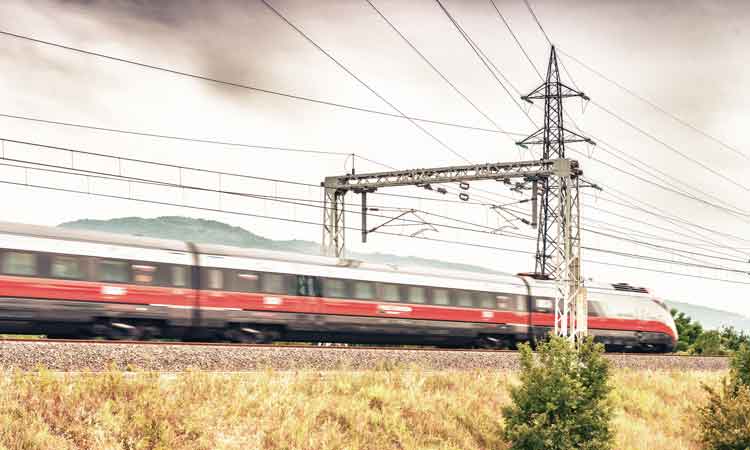How to take forward ERTMS for a modern Italian railway system
Posted: 17 November 2022 | Chiara Iommazzo, Fabio Senesi, Gaspare Antona | No comments yet
The introduction of an ERTMS/ETCS Accelerated Plan is a great challenge for the whole Italian railway system. Rete Ferroviaria Italiana (RFI) is one of the main developers of the system, used to overcome the market constraints imposed by the legacy national signalling systems and achieve an interoperable European rail network. Fabio Senesi, Chiara Iommazzo and Gaspare Antona from RFI, explain more.


The European Railway Traffic Management System (ERTMS) is a single European signalling and speed control system that ensures interoperability of the national railway systems, reducing the purchasing and maintenance costs of signalling systems, as well as increasing the speed of trains, the capacity of infrastructure and the level of safety in rail transport.
ERTMS is chosen as a standard by the European Commission (EC) to overcome the constraints between different national signalling systems and to promote the interoperability of railway networks.
Italy was among the first European countries to adapt ERTMS to its high-speed network. For the existing lines, according to the national implementation plan issued in 2017, Italy has foreseen the progressive deployment of ERTMS overlapped with the national Class B system, with the possibility of decommissioning this last one only after 2026.
The experience of dual trackside equipment we are undertaking with the ‘Breakthrough Programme’ issuing the higher cost in terms of investment and maintenance of the double system, and performance limits, due to the need to adapt logic and regulation to the legacy system.
In this context, RFI proposed to migrate to a dual onboard strategy, based on the deployment of ERTMS, coupled with the decommissioning of the Class B system and in parallel the retrofit or upgrade of the whole operating fleet.
In Italy, there are currently approximately 800km of high-speed lines in operation using ERTMS Level 2 and another 200km in construction. While the conventional lines equipped using ERTMS overlapped with the Class B system and with approximately 160km in operation, the other 1,000km is planned to be in construction for the next few years.
A specific cost-benefit analysis that accompanied the proposed initiative, comparing different scenarios, shows that the best way to migrate to ERTMS dual inboard is accelerating the deployment over the whole network.
ERTMS Accelerated Plan Trackside
The highlights of the Italian ERTMS Accelerated Plan are the extension of ERTMS over the whole railways infrastructure (approximately 16,800km by 2036), the progressive decommissioning of the Class B system to proceed with the contextual and simultaneous deployment of ERTMS trackside and onboard, and providing the necessary financing to the railway undertakings. Furthermore, to fully exploit ERTMS, the acceleration also implies that the technological renewal of Digital Interlocking, Traffic Management System, Telecommunication System, and ETCS, are now carried out in coordination with ERTMS, to make the technological renewal process more efficient.
This model required a new RFI governance of investment with the use of multitechnological framework agreements and multi-technological project managers for a geographical area.
This plan received €3 billion of European Funding by Recovery Plan to realise the investments on trackside until 2026, which for us represents a great answer to our mission.
Thus, the status of ERTMS realisation by 2026 is represented in Figure 1. The black lines represent sections already equipped and in operation with ERTMS. The green lines show the Breakthrough Program lines to be realised by 2026 using the ERTMS (Class A) system overlapped with the national system (Class B). The red lines show only the sections that must been equipped with ERTMS Level 2 standalone of the Accelerated Plan.
In the next few years, we have the completion of the dual trackside project currently in construction and the Accelerated Plan started in 2021 with the launch of tender to realise ERTMS dual onboard, on approximately 4,000km compliance to the Recovery Plan targets. The synergic trackside onboard plan and technological renewal were previously shared with the railway undertakings, to consider and harmonise the needs of stakeholders, with our national and European objectives.
Therefore, in the early years this plan starts mainly from the regional off-TEN lines, where there are smaller fleets to be updated with ERTMS.
Retrofit strategy
To retrofit vehicles from Class B system to ERTMS with Class B system is an essential step of the dual onboard strategy, it is necessary to decommission Class B. In our model, the type or prototype of vehicles is developed by RFI and serial vehicles of the fleet by the railway operators, with a co‑financial help by a member state to grant 50 per cent of the total cost. The convenience of single management of prototype updates is to reuse the same authorisation work for different railway undertakings. Moreover, in Italy there is a technological credit because we have a Class B system realised 20 years ago that reuses the ERTMS component, which will be reused with the retrofit. A key financial requirement to reduce the risk of slowing down ERTMS implementation is incentivised deployment and increasing onboard cofunding rates up to 100 per cent, mainly in the case of large-scale accelerated deployment plans.
Another key point to facilitate this process is to simplify and speed up the conformity check on series and vehicles to type.
Conclusions
This challenge is great and there are improvements if we want it to be successful. The most important concern is greater financing for implementation of the onboard, more collaboration between stakeholders to support the dual onboard strategy and simplifying the authorisation process for a series of vehicles. It has become necessary to have a synchronised and harmonised ERTMS deployment of tracksides and onboards.
Considering the technological developments, RFI finds different challenges to having a more modern and performing railway system, such as high density (HD) projects to increase the punctuality in the urban node’s traffic, geometric interlockings to optimise the station logistics. Also, the experience carried out up to this point has highlighted all the advantages associated with the use of ERTMS in terms of improvement of safety, capacity, efficiency, and reliability. To introduce the ERTMS Regional Level 3 in operation, the Automatic Train Operation (ATO), and the localisation of trains is improved using the satellite technology. Finally, the migration to Future Railway Mobile Communication System (FRMCS) is exploited, in close cooperation with the different stakeholders from the rail sector, as the successor of GSM-R, but also as a key enabler for rail transport digitalisation.






Stay Connected with Global Railway Review — Subscribe for Free!
Get exclusive access to the latest rail industry insights from Global Railway Review — all tailored to your interests.
✅ Expert-Led Webinars – Gain insights from global industry leaders
✅ Weekly News & Reports – Rail project updates, thought leadership, and exclusive interviews
✅ Partner Innovations – Discover cutting-edge rail technologies
✅ Print/Digital Magazine – Enjoy two in-depth issues per year, packed with expert content
Choose the updates that matter most to you. Sign up now to stay informed, inspired, and connected — all for free!
Thank you for being part of our community. Let’s keep shaping the future of rail together!
Issue
Related topics
Automatic Train Operation/Autonomous Train Control (ATO/ATC), Digitalisation, European Rail Traffic Management System (ERTMS), European Train Control System (ETCS), Future Railway Mobile Communications System (FRMCS), High-Speed Rail, Infrastructure Developments, Signalling, Control & Communications








